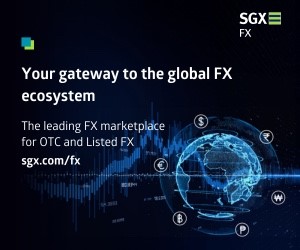Macro Hedge Funds Squeeze a Positive Amidst Hedge Fund Losses
Posted by Colin Lambert. Last updated: July 13, 2022
While they continue to outperform equities markets, hedge funds suffered through the first half of 2022, with only Macro funds managing to squeeze out a positive return, and that of 0.05%, according to hedge fund research firm HFR.
The investable HFRI 500 Fund Weighted Composite (FWC) Index fell 2.6% in June, the largest decline since March 2020, as gains in quantitative, trend-following CTA and market neutral equity strategies were more than offset by declines in the highest beta equity and fixed income strategies. The HFRI Fund Weighted Composite Index fell 3.1% in June, lowering year-to-date performance to -5.9%.
Although the numbers are negative, HFR observes that the indices comfortably outperformed the S&P 500 by 1,600 bps and the Nasdaq Composite by 2,550 bps through the first six months of 2022. This, it says, represents the largest outperformance of equity markets in the first half of a calendar year since FWC Index inception in 1990.
The top decile of the HFRI constituents gained an average of 4.65& in June while the bottom decile declined by an average of 18.3% for the month, representing a top-bottom dispersion of 22.95%. Through the first half, the top decile of the HFRI has surged an average of +34.6%, while the bottom decile has declined by an average of -32.2%. Approximately 30 percent of hedge funds posted positive performance in June, while roughly 37 percent produced gains in the first half.
Size clearly helped, however, for larger, more established hedge funds outperformed smaller hedge funds in both June and the first half of the year, as the HFRI Asset Weighted Composite Index (which has the same constituents as the equal-weighted version) fell only 0.9% for the month and has gained 1.55% through mid-year 2022.
By eking out a small gain in June, the HFRI 500 Macro Index hit +14.2% year-to-date, thanks to strong contributions from quantitative, trend-following CTA and active trading strategies. Macro sub-strategy performance was led by the investable HFRI 500 Macro: Systematic Diversified Index, which gained 1.1% in June. For the first half, macro sub-strategy performance was led by the HFRI 500 Macro: Commodity Index, which surged 34% in the first six months of the year, and the HFRI 500 Macro: Systematic Diversified Index, which rose 18.8%.
As was the case with equity, risk premia and event-driven strategies, fixed income-based, interest rate-sensitive strategies declined in June, as the investable HFRI 500 Relative Value Index fell 2%, while the HFRI Relative Value (Total) Index lost 1.75%. For the first half, the HFRI 500 Relative Value Index posted a narrow decline of 0.66%, while the HFRI Relative Value (Total) Index fell 2.2%.
“Powerful risk off trends accelerated in June driving extreme financial market volatility with hedge funds trading through a wide range of risks including not only generational inflation, increasing interest rates, the continuation of the Russia/Ukraine war and record energy price increases, but also the increased likelihood of a consumer-led US economic recession,” says Kenneth Heinz, president of HFR. Through the volatility, uncorrelated macro strategies delivered strong, negatively correlated performance driven by commodity and quantitative, trend-following strategies.
“Despite declines for the month, hedge funds have effectively navigated the intense 2022 volatility with not only macro, CTA, and commodity strategies, but the broad-based HFRI 500 Composite Index comprised of all hedge fund strategies each producing the largest outperformance of the S&P 500 and Nasdaq Composite indices, respectively, through the first half of a calendar year since HFR index inception,” he continues. “With expectations for the first half volatility to continue through the second half, institutional investors are likely to increase commitments to strategies which have demonstrated their ability to preserve capital through recent declines, while opportunistically positioning for dynamic positive or negative market environments.”



